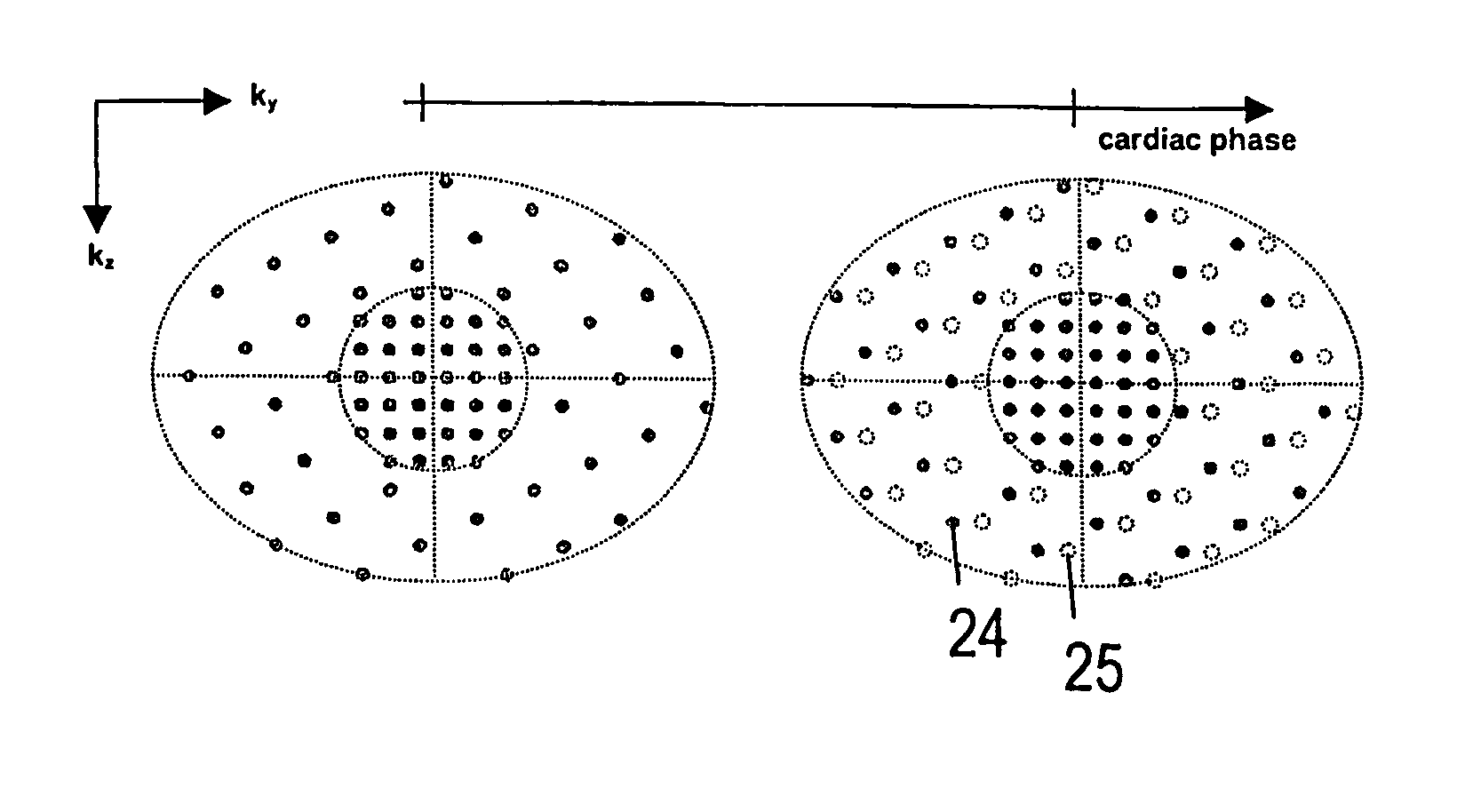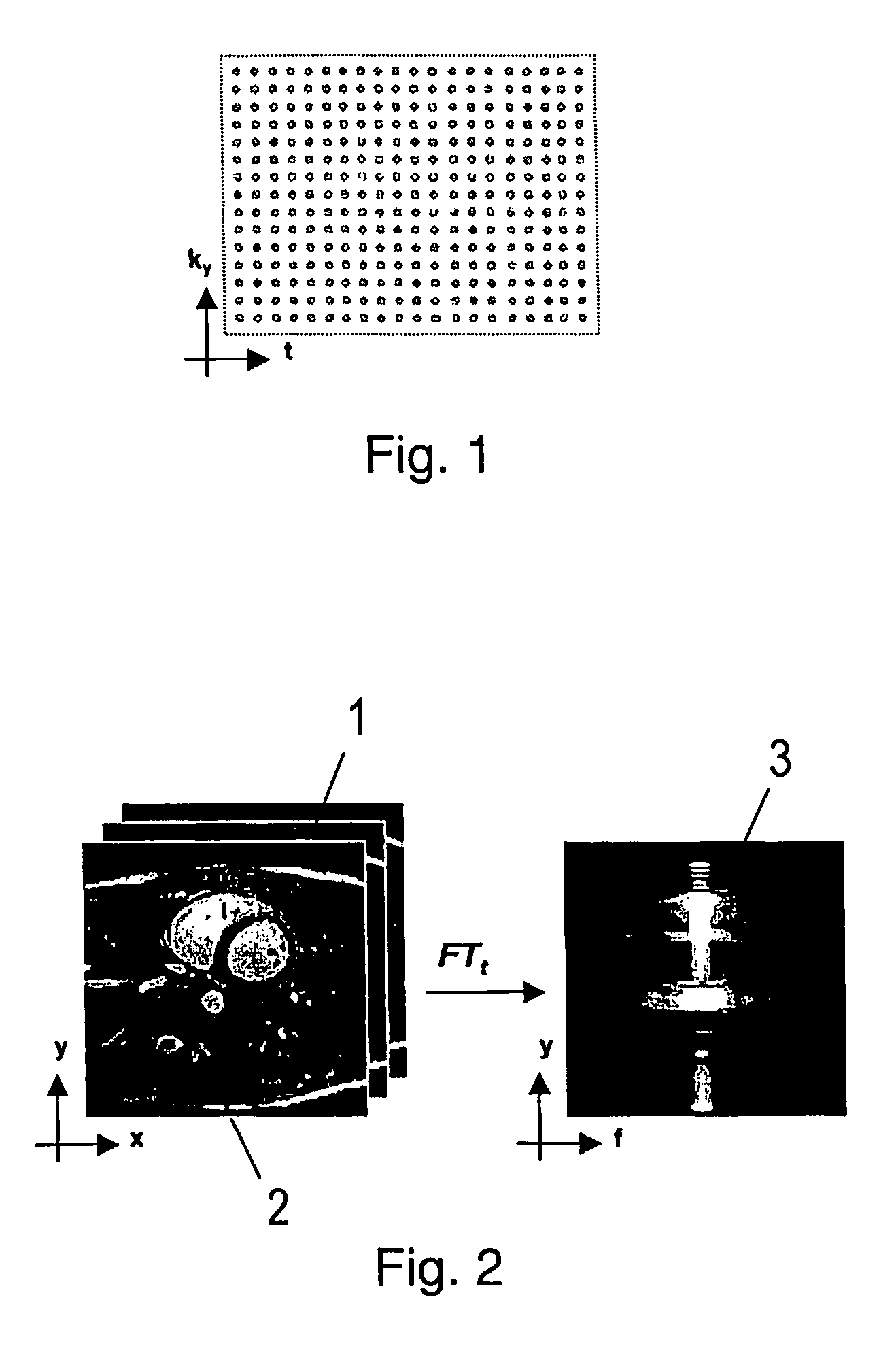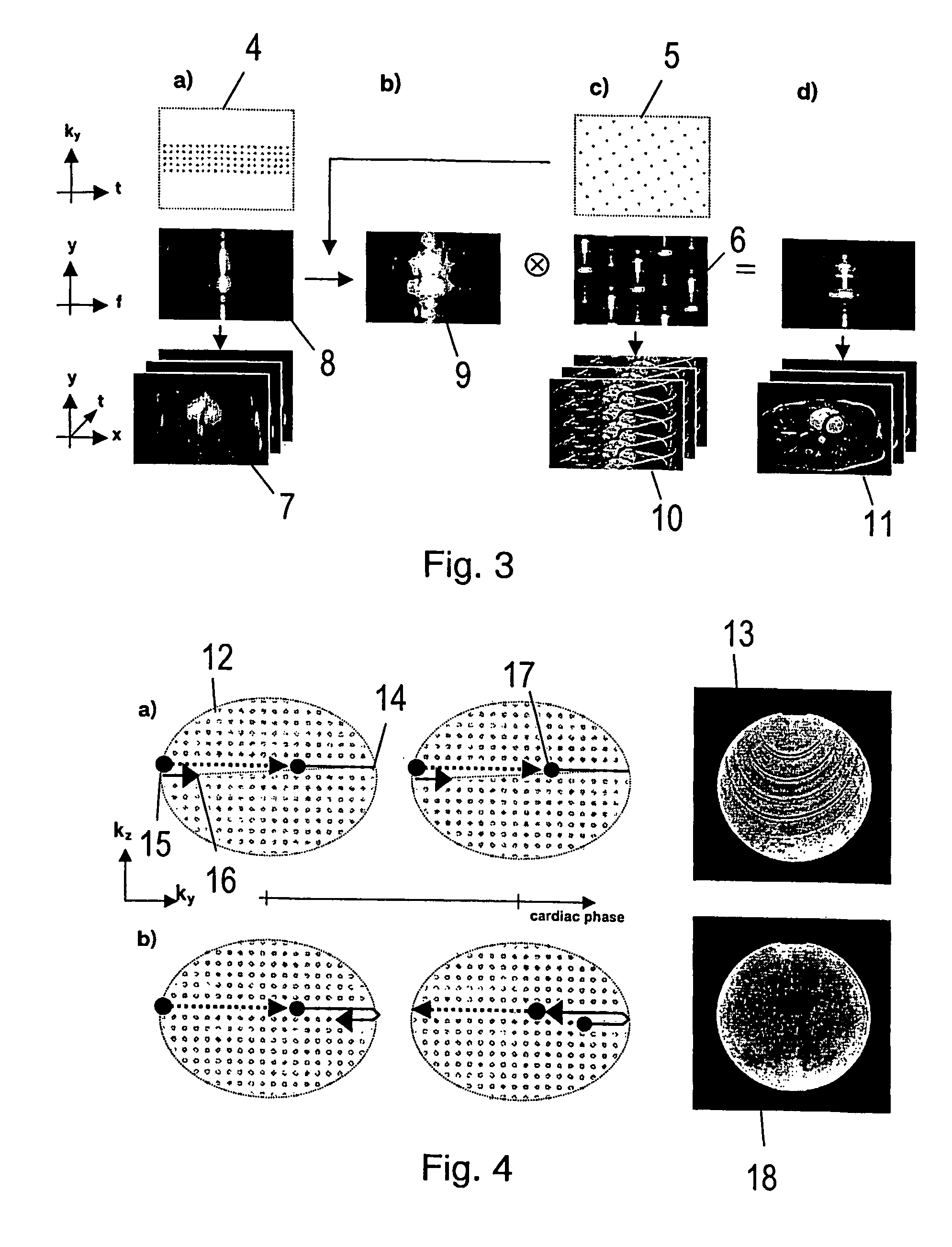System and method of magnetic resonance imaging for producing successive magnetic resonance images
a magnetic resonance imaging and image system technology, applied in the field of magnetic resonance imaging to produce successive magnetic resonance images, can solve the problems of accelerated ssfp being prone to image artifacts, low level in practice, and shortening scan time, so as to speed up ssfp dynamic imaging, reduce data sampling, and high acceleration factor
- Summary
- Abstract
- Description
- Claims
- Application Information
AI Technical Summary
Benefits of technology
Problems solved by technology
Method used
Image
Examples
Embodiment Construction
[0021]The MR method according to the present invention is based on an approach for accelerated data acquisition in dynamic imaging, called k-t BLAST (Broad-use Linear Acquisition Speed-up Technique) and k-t SENSE (SENSitivity Encoding). The k-t BLAST and k-t SENSE methods are described in an abstract byJ. Tsao et. al. (Prior-information-enhanced Dynamic Imaging using Single or Multiple Coils with k-t BLAST and k-t SENSE. Proc. Int. Soc. Magn. Reson Med., Abstract 2369. 2002).
[0022]The present invention and the subject matter of U.S. Pat. No. 7,005,853 B2 to Tsao et al. were made by or on behalf of the parties to a joint research agreement within the meaning of U.S.C. § 103(c)(3), the parties being Philips Medical Systems Nederland B.V. (an affiliate company of Koninklijke Philips Electronics N.V.). Universität Zürich and ETH Zürich.
[0023]In the following, the k-t BLAST method is briefly reviewed. k-t SENSE is similar, but it additionally takes the complex sensitivity information of ...
PUM
 Login to View More
Login to View More Abstract
Description
Claims
Application Information
 Login to View More
Login to View More - R&D
- Intellectual Property
- Life Sciences
- Materials
- Tech Scout
- Unparalleled Data Quality
- Higher Quality Content
- 60% Fewer Hallucinations
Browse by: Latest US Patents, China's latest patents, Technical Efficacy Thesaurus, Application Domain, Technology Topic, Popular Technical Reports.
© 2025 PatSnap. All rights reserved.Legal|Privacy policy|Modern Slavery Act Transparency Statement|Sitemap|About US| Contact US: help@patsnap.com



